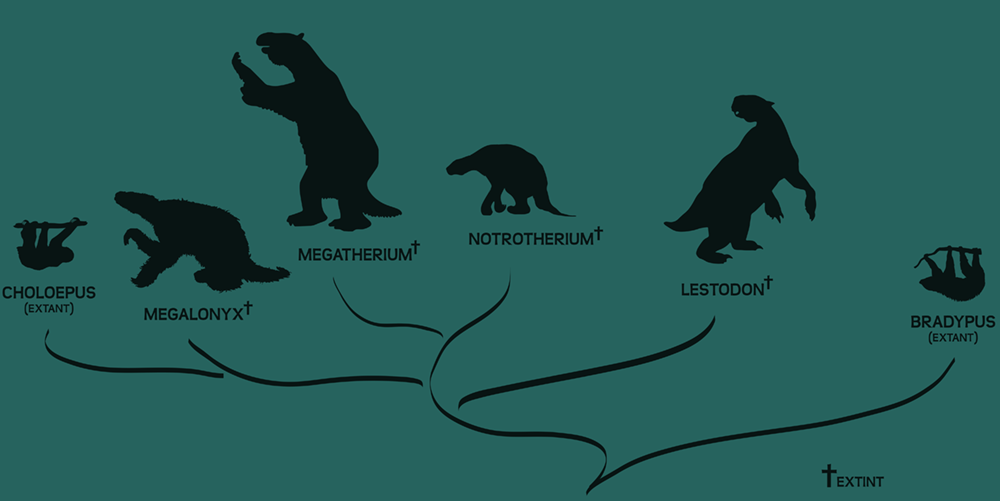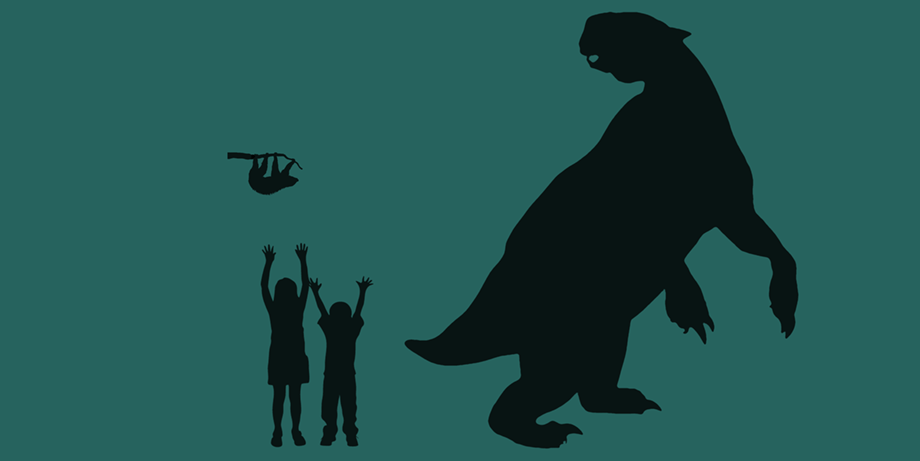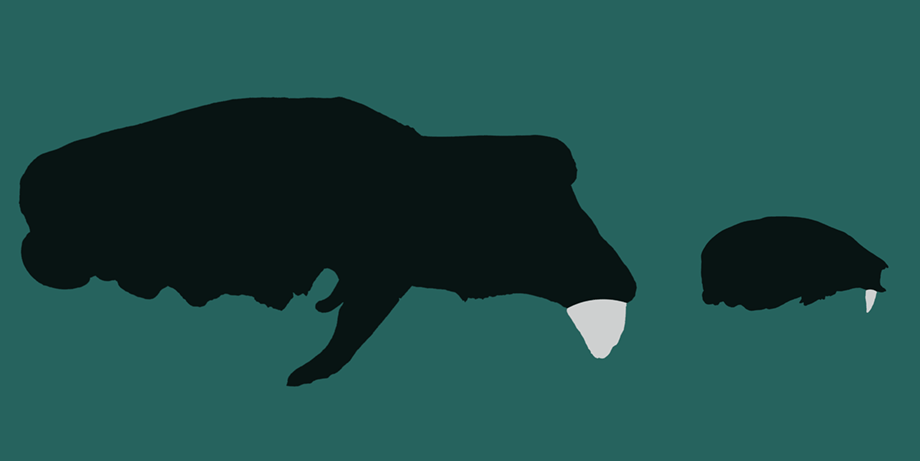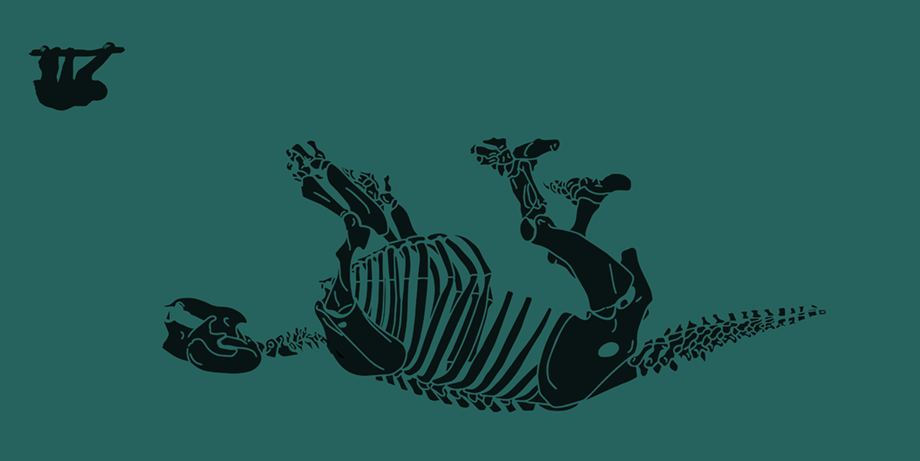Comparing crania
Sloth vs. Sloth













0.0 mm
| Plane | Position | Flip |
| Show planes | Show edges |

 Initial view
Initial view
 Zoom In
Zoom In
 Zoom Out
Zoom Out
 Enable light control
Enable light control
 Enable Measure tool
Enable Measure tool
 Enable plane sections
Enable plane sections
 Full screen
Full screen
Drag: Rotate model
Drag + CTRL: Pan model
 Lestodon
Lestodon Choloepus
CholoepusClick the buttons above to turn on or off the 3D models in the viewer

Phylogeny
Ground sloths are one of the most abundant groups in the South American fossil record. These animals, although much larger, are closely related to the modern sloths Choloepus and Bradypus, which are small and live on trees. However, as can be observed in the figure, living sloths are not closely related to each other. Choloepus, the living sloth whose skull can be seen above, is closely related to the extinct sloths from the Antilles, while Lestodon belongs to a group of sloths without modern representatives.

Sizes
Although these animals belong to the same group and share many features, their difference in sizes is remarkable. While modern sloths weigh less than 10Kg, ground sloths such as Lestodon could weigh several tons.
In the 3D models you can see the difference in size between their skulls.

Habits
Another important difference between these animals is in their habits. While modern sloths live hanging from tree branches, the extinct species lived on the ground and could even walk in an upright position. Furthermore, even though living sloths are known for their slow movements, there is evidence that suggests that their extinct relatives were more agile and active.

Caniniform
The teeth of the xenarthrans, including sloths, differ from those of other mammals in that they lack the external enamel layer. In addition, their dental formula varies greatly, making it difficult to compare their teeth to the incisors, canines, premolars and molars from other mammals. For this reason, the teeth of xenarthrans are commonly called molariforms due to their similarity to molars, and in some special cases they are called caniniforms or incisiforms because they resemble canines or incisors, respectively.
On the 3D models you can see the similarities between the caniniform belonging to the small sloth Choloepus and the one from the extinct giant Lestodon.
In the Battle of the fangs activity you will find more information about the differences between the teeth of sloths and other mammals.

Extinction
The majority of the sloth species became extinct at the end of the Pleistocene, around 10,000 years ago. The only survivors from this highly diverse group are the two extant genera. It is possible that their high specialization towards living in trees and their smaller size allowed them to overcome the processes that drove the rest of the group to extinction.





